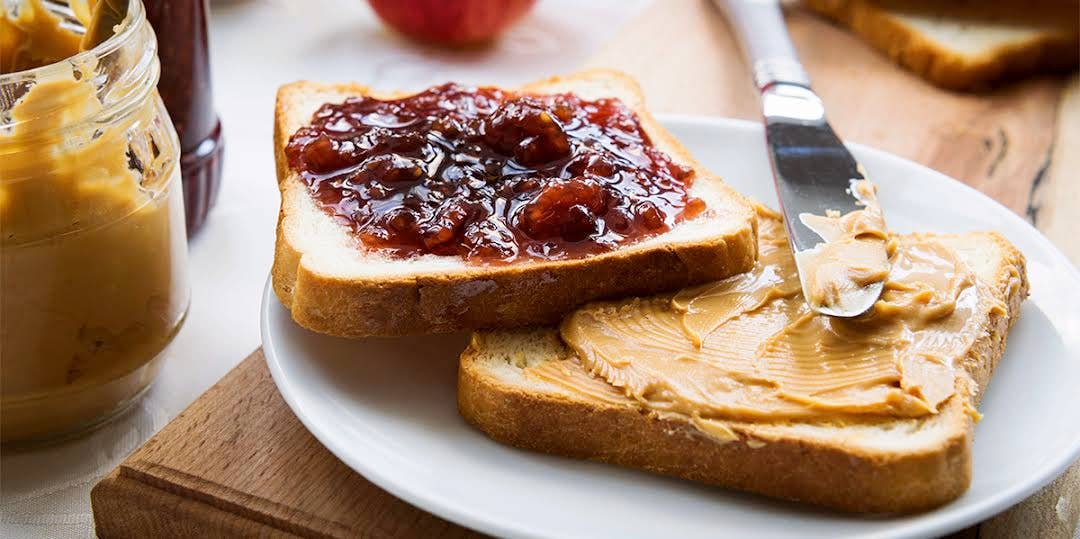This Peanut Butter And Jelly Sandwich Video Perfectly Explains Implicit Bias
Are you making snap judgements about people?
 VelP / Shutterstock
VelP / Shutterstock Talking about people's attitudes on race is a difficult thing to do. Feelings get hurt and people get defensive and angry. But it's worthwhile to spend time quietly examining your own feelings about race because the issue is so complicated that we each need to treat it as an ongoing educational process for ourselves.
In 2016, Hillary Clinton used the phrase "implicit bias" and got a lot of attention for it. She was talking about sexism and the ways that people made assumptions about her as a woman that they didn't make about the men running against her for the Democratic nomination. The New York Times picked up the idea and made a video talking about what the phrase "implicit bias" means and how we all have implicit biases about a lot of different things.
The video breaks it all done nicely and even manages to use a peanut butter and jelly sandwich to explain why we might make associations that don't always make sense.
What is implicit bias?
The video explains that implicit bias is the way our minds make assumptions. This isn't a conscious process, it's more that we have learned certain things and internalized the lessons, then apply those ideas automatically. For example, we may have heard a lot of stories about pit bulls hurting people or other dogs and then led us to develop a bias against pit bulls. Now when we see a pitbull, we immediately assume they are dangerous, without even thinking about it.
"Implicit biases are basically thought processes that happen without you even knowing it, little mental shortcuts," New York Times' Saleem Reshamwala tells the camera in the above video.
Do we all have implicit biases?
It might be nice to think that we are all the kind of thoughtful people who consider every individual situation on its merits, but that's not actually how we're wired. We all have biases about all kinds of things. It isn't automatically bad, for example, to have a bias that leads you to be afraid of wasps — that's actually pretty smart. Or a bias that makes you want to pet cats because you like the sound of a cat's purr: that's perfectly fine, too. But when you make unfounded snap judgment about people, it gets more complicated.
How do people hold on to implicit biases about other people?
Reshamwala goes on to say that people can have implicit biases about other groups of people. We all make snap judgments based on information we already have stored in our memories and we take those mental shortcuts to make assumptions about other people. For example, you might see a really tall person and immediately assume they are good at basketball because you've learned to associate height and the popular sport in your mind.
Another way people might judge each other implicitly is by taking another person's race into account.
What does peanut butter and jelly have to do with implicit bias?
In the video, Dolly Chugh, an associate professor at NYU's Stern School of Business talks about how our brains learn to link separate things after seeing them together repeatedly. "If you say 'peanut butter,' I'm going to say 'jelly,'" Chugh explains. "That's an association that's been ingrained in me, because throughout my life, peanut butter and jelly are together."
But then she shares an example of linkages that aren't positive and can lead to racism. "In many forms of media" she explains, "There's an overrepresentation of Black men and violent crime being paired together."
Mixing two things doesn't always lead to positive associations.
Shaun R. Harper, the executive director of the Race and Equity Center and professor at the University of Southern California, confesses in the video that even he, a Black man, has internalized media messages about Black men himself, in a way that is actually racist. "I actually deep down inside have been taught that Black men are violent and aggressive, and not to be trusted," he says. "That they're criminals, that they're thugs."
Understanding your biases is a good thing.
As Turner explains, he didn't mean to learn that lesson any more than anyone else meant to learn it. But once a person has noticed that they hold a bias like that, they can begin to examine it more closely and take apart in untruths in it. Taking some time to figure out why we think things is a constructive way to make sure we're not making mistakes about people before we even give them a chance.
How can we learn more about implicit bias?
Researchers have been studying implicit bias for years. You can learn more about it, including taking an online test about your own biases by checking out the Project implicit website.
Rebekah Kuschmider has been writing about celebrities, pop culture, entertainment, and politics since 2010. She is the creator of the blog FeminXer and she is a cohost of the weekly podcast The More Perfect Union.
